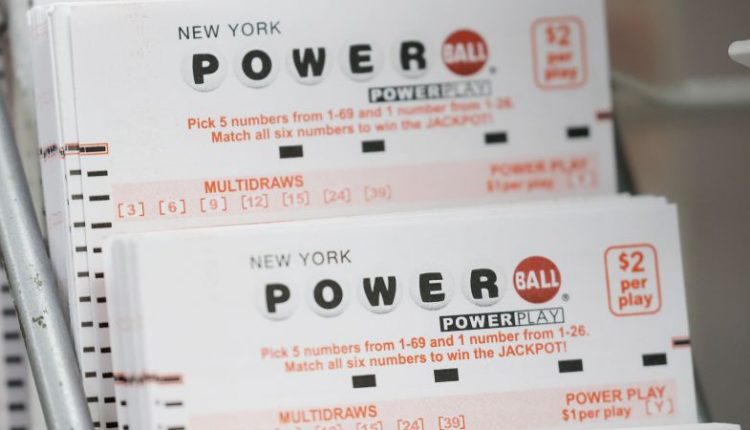Editor’s Note: This is an updated version of a story that was previously published on Nov. 8, 2022.
The latest Powerball jackpot has jumped to $1.73 billion as the prize becomes the second largest in the lottery’s history.
But in 1987 when Lotto America, the precursor to Powerball, was introduced, organizers prohibited jackpots of more than $80 million.
“There were concerns about what you could do with that money — like buy a small country or something,” Ed Stanek, director of Lotto America, said at the time.
Lottery frenzy had taken took hold in the 1980s as more states introduced lotteries to collect revenue for education and social programs, but some smaller states’ jackpots couldn’t keep up with more populated states.
Oregon, for example, was losing players to Washington and California, which offered jackpots of up to $20 million.
So officials in Rhode Island, Oregon, Missouri, Iowa, Kansas, West Virginia and Washington, D.C. joined together to create Lotto America as a way to pool money and offer larger prizes. They also hoped the bigger pots would entice first-time players.
”Our motivation is to offer Oregonians a chance to play in games they could play in one of the big states,” then-Oregon Lottery director James Davey said.
The interstate lottery was modeled after those in Canada and the US Virgin Islands.
Officials hoped Lotto America would offer average weekly jackpots of $3 million to $5 million, with the possibility of higher prizes after a year or two. Expenses for running the drawings and profits from ticket sales were split among the jurisdictions in proportion to each state or district’s ticket sales.
”This is a whole new ballgame,” Lotto America spokesman Jack Ratigan said at the time.
Lotto America initially offered players a chance to choose seven numbers from a field of 40 for a minimum bet of $1.
Players whose numbers matched those selected in a weekly drawing would win a jackpot determined by the total number of tickets sold.
The odds of winning the top prize were about 1 in 19 million, compared with odds of about 1 in 8 million in most state lottery games, officials said.
An Iowa farmer who had gone bankrupt was the first Lotto America winner in 1988. He said he would use the $3 million prize to save his family’s farm.
A year later, Lotto America changed to selecting six numbers from a field of 54. That year, it offered a $20 million jackpot, and in 1991, the pot hit $50 million.
By 1992, Lotto America had grown to include fifteen states.
The game was re-branded as Powerball in an effort to give players a better chance to win smaller prizes.
“What we are hearing is that people like the big prize but they want a better chance of winning smaller prizes,” said Oregon Lottery director James Davey.
Powerball soon offered a $100 million jackpot.
During the 1990s, however, players started to get “jackpot fatigue,” and Powerball required larger and larger prizes to sustain interest, said Jonathan D. Cohen, author of “For a Dollar and a Dream: State Lotteries in Modern America.” Meanwhile, instant scratch-off games grew in popularity and became the primary form of lottery play.
In 2010, in an effort to gain more players and increase the size of the jackpots, Powerball and Mega Millions, the two largest multi-state lotteries, agreed to allow retailers to cross-sell both games for the first time.
A year later, the price of a Powerball ticket increased from $1 to $2, and initial jackpots doubled. The game is now available in 45 states, Washington D.C., Puerto Rico and the US Virgin Islands.
These changes have pushed Powerball jackpots way up. The five largest Powerball jackpots have all come in the last six years. The odds of winning the top prize now stand at 1 in 292 million.
Lotteries are regressive, meaning lower-income groups spend more of their budgets on lottery games than higher-income groups.
Powerball tends to be the least regressive lottery game, Cohen said, because wealthier people tend to buy tickets when jackpots soar.
But for most of the year, “there’s a slow burn of disproportionately poorer people putting money into smaller prizes.”
Read the full article here

